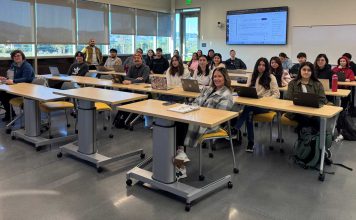State Education Code mandates teachers talk about HIV/AIDS, but
not other STDs
Gilroy – Students and at least one district official say the Gilroy Unified School District should be teaching students more about sexually transmitted diseases rather than HIV/AIDS.
Even though STDs, such as herpes, Human papillomavirus (HPV) and genital warts are more prevalent, the California Education Code for sex education was written at a time when the public thought HIV/AIDS posed the biggest threat to the youth, said Sharla Smith, HIV/STDs prevention consultant for the California Department of Education.
The code only requires middle and high school teachers to address HIV/AIDS. In middle school, students are required to take a health class, while in high school the HIV/AIDS education just has to be touched on during a class. There are no time requirements for the high school or middle school sex education.
Most teachers go above and beyond HIV/AIDS education, but they don’t have to, said Smith. The law clearly states what they must talk about and afflictions such as HPV, which is the virus that causes genital warts and is one the most common causes of STDs in the world, according to the U.S. Department of Health and Human Services, herpes and genital warts, aren’t included in the curriculum, she said.
Since one in four sexually active adults in California is living with herpes and one in eight has HPV today, Smith said she wishes she understood why the code hasn’t been changed. There are 100 different types of HPV and 30 are spread through sexual contact.
Since HPV is spread through skin-to-skin contact, a condom will not always prevent transmission.
“Obviously we have a high prevalence in this state, no one’s going to repute that fact,” Smith said.
Some recently-interviewed Gilroy High School students said they think educators should address more prevalent STDs. All of them said they don’t remember learning anything about STDs in high school.
GUSD trustee Dave McRae said students probably aren’t receiving enough STD education and he thinks classes should be more graphic to get the point across.
“It’s out of balance with the reality a bit,” he said. “The odds of one of our students contracting HIV versus contracting HPV or herpes,” is pretty low.
According to an August report from the California Department of Health Services, 85 percent of those with HIV in California are men. A total of 14 percent are women and 1 percent transgendered. A total of 72 percent of the causes listed for men was “men who have sex with men.” Twenty-three percent of the women infected and six percent of the men, listed injected drug use as the cause.
McRae thinks the community needs to address the STDs issue, not brush it aside.
“Because you know what? The reality is the same,” he said. “Whether you whisper about it or not when you walk out of the doctor’s office, there’s the same treatment waiting for you.”
Kids are having sex but not as many as the public may assume.
According to the 2004 California Healthy Kids survey, 85 percent of ninth-graders and 69 percent of high school juniors in Santa Clara County, said they’d never had sex. The high school percentage is lower than the Healthy People objective of 75 for teens between 15 and 17 years old.
And even with HIV/AIDS education, 18 percent of the sexually active seventh, ninth and 11th-graders reported using no form of birth control the last time they had sex.
During a recent interview, district nurse Eileen Obata said that the most important aspect of sex education is to emphasize that if you’re going to have sex you should be safe. Even if teachers mainly talk about HIV/AIDS, the students will still be learning how to protect themselves, she said.
“Hopefully (we’re) driving it home how you get these diseases (and) they’ll prevent all of them,” she said.












